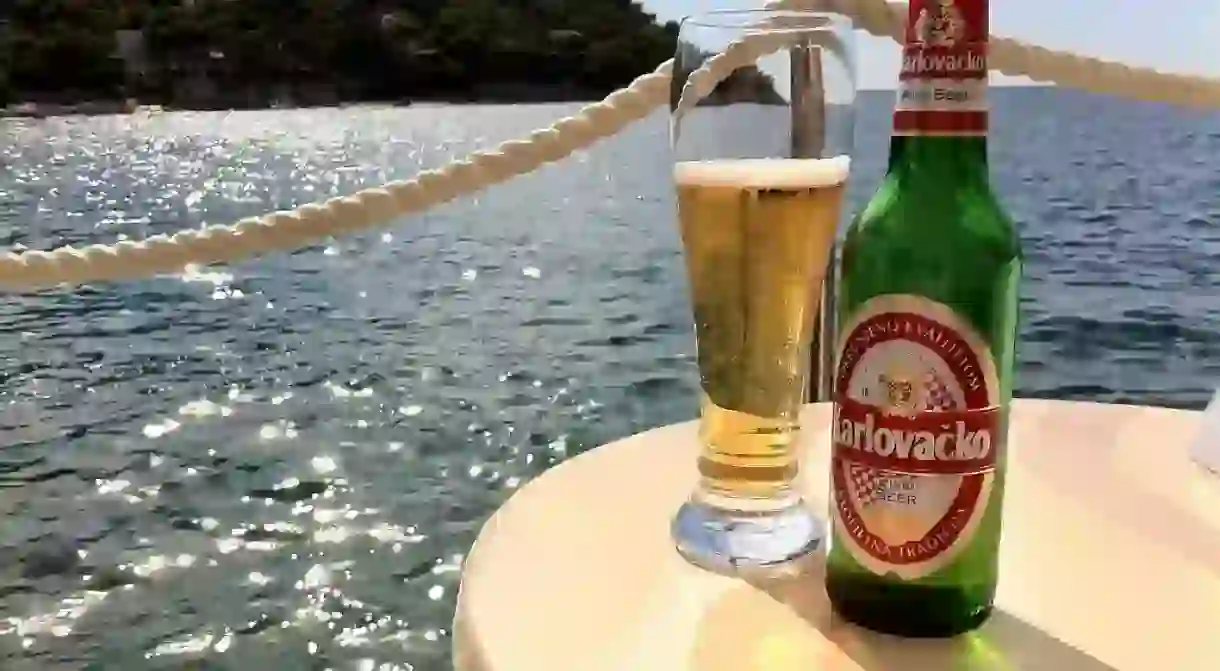A Guide to Drinking Etiquette in Croatia

The first thing you have to know about drinking in Croatia is that there’s plenty of it. Croatians aren’t shy to sink a drink – although you won’t see much drunkenness on the street, unless it’s a group of backpackers enjoying a rowdy summer.
Croatia is both a beer- and a wine-drinking culture. Spirits, too, but these spirits are mainly variations on rakija, clear brandy created from various fruit, nuts, even mistletoe. You’ll find vodka, whisky, brandy and major types of strong alcohol in most bars but the average domestic drinker will not be fussed that he can’t get Grey Goose L’Orange at his local bar.

Beer is the general order of the day, the leading domestic brands of Ožujsko and Karlovačko – light lagers, little wrong with them – now being overshadowed by a flood of craft beers. Every main town will now have some kind of craft beer bar, or at least a selection of craft beers such as those from the Garden Brewery, Istrian San Servolo and Zagreb’s Zmajska.
Bars will have beer on tap, točeno, but many locals prefer to order from the bottle. ‘Cheers’ is živjeli but there’s no Bavarian-type manly clanking of glasses. A group of mates heading to a football match might be more communal about their collective imbibery but there’s little social ritual.
These days, it’s 50-50 whether you serve yourself at the bar or a waiter brings your drinks. Don’t expect any bar snacks – you’re here to drink. Closing times aren’t too strictly enforced. Smoking isn’t banned, it’s obligatory. Since everyone smokes, a night in, say, Zagreb, can be heavy going if you’re not used to having cigarettes around you. As drinking in Dalmatia is done outdoors, this is less of a problem down south.

Croatia’s wine industry has developed and improved dramatically over the last 10 years, from being mass-produced and state-run, to independent, mainly small-batch, and really rather good. Again, if you’re not sipping at an upscale hotel or a wine bar, in, say, Dubrovnik, you won’t be able to pick out a fine glass of plavac mali, the indigenous grape that revived the whole industry in Dalmatia. The average bar will serve you a miniature of Graševina, an acceptable white from Slavonia, and the backdrop of sun and sea will do the rest.
Locals like to add mineral water to a glass of standard wine, a white spritzer in the north known as a gemišt, a red one in the south called a bevanda.
Every town, village and coastal resort will have a few bars in it, the distinction with cafés invariably blurred. Some cities have streets or areas that lend themselves to a bar crawl, most notably Diocletian’s Palace in Split and Tkalčićeva in Zagreb.
Finally, if Croatia has several ways to get you drunk, it has one way to deal with a hangover. Domestic brand Cedevita has been producing instant vitamin drinks for generations, helping children overcome colds and student get through their exams. It is also the perfect morning-after cure, available in most cafés and bars. The blood-orange variety is a quality pick-me-up if available.













